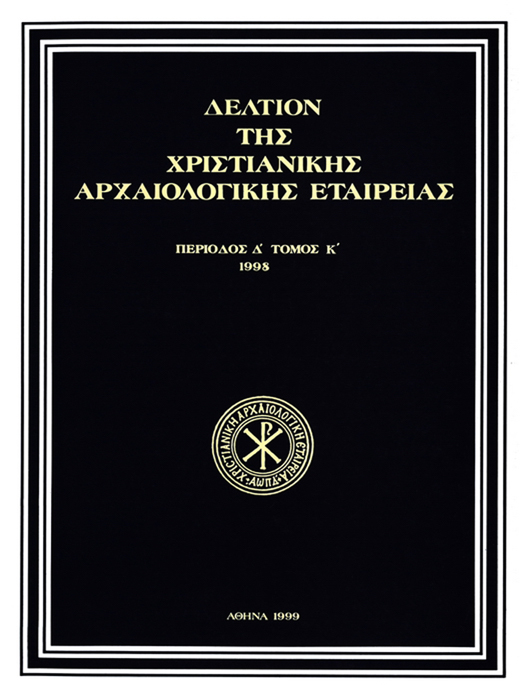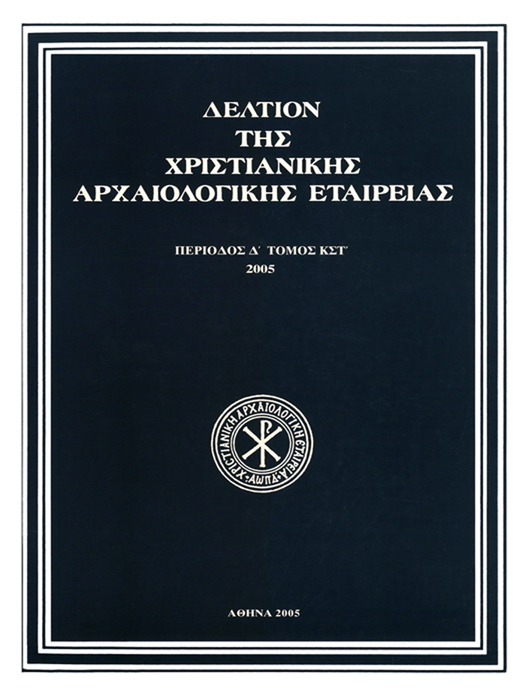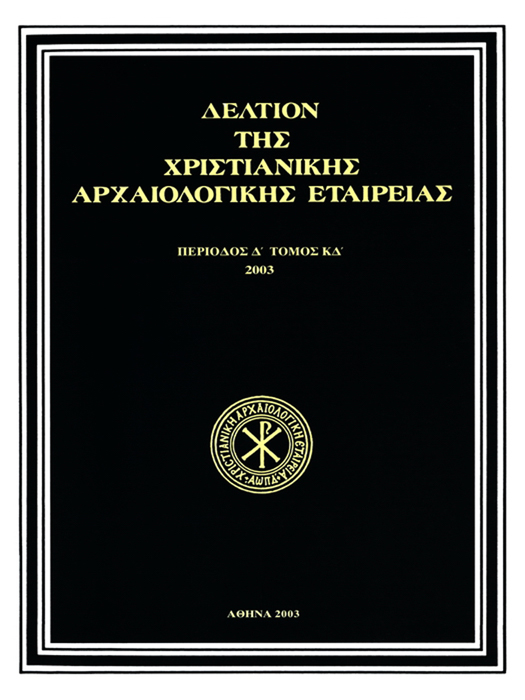Byzantine «Renaissances» and the architecture of the 11th and 12th centuries
Abstract
The term «Renaissance» has been used in the history of Byzantine art to describe the recurrence of various elements of ancient art, which were employed in a desire to renovate it. This return to the models of Greco - Roman tradition was closely related to imperial ambitions to resuscitate the glorious past and nearly always stemmed from the capital city. But recent studies prove that the term «Renaissance» is deceptive, because in actual fact these byzantine movements have little in common with the Italian Renaissance, inspite of external similarities such as the humanistic culture or the study of the ancient texts. The return to antiquity is more apparent in minor sculpture on ivory, in manuscript illuminations and in painting generally. This article studies where and in what elements of the middle byzantine period we can identify a return to antiquity in the field of architecture, and whether the greek heritage played any part in its development. The imitation of ancient structures was hampered by functional and structural requirements and the demands of symbolism. Moreover, the capital city, where all such revivals originated, had nothing to offer in terms of ancient greek monuments that could have served as models —only Roman or Early Christian ones. On the other hand, the provinces that possessed these models had not the possibilities for original and expensive realisations in architecture. As in the case of sculpture, the tendency in architecture was to approach the ancient structures from the literary point of view, and the study of the actual remains was ignored. Were ancient texts on architecture, such as those of Vitruvius, known to the Byzantines of the 11th and 12th centuries and, if they were, what influence did they exert? Although we may discern harmonious relationships that suggest a survival of ancient canons, a direct dépendance on ancient texts seems improbable. Likewise, the study of architectural forms in the churches of the middle byzantine period reveals no positive evidence. Although a number of ancient decorative motifs were reproduced in decorative carving, we do not know whether these constitute a revival or simply a survival of ancient models. This article also examines the use of original greek architectural fragments in byzantine churches, and the classicist spirit governing the new compositions (the Gorgoepikoös in Athens). Buildings directly influenced by the capital city employ forms borrowed from Rome or late antiquity. The harmonious proportions characteristic of byzantine architecture show that the architects of that period had inherited the aesthetic principles of Greco-Roman tradition. The qualities of simplicity, clarity, scale and harmony inherent in their works are, perhaps, the most substantial proof of continuity. Research on byzantine texts reveals that the Byzantines themselves were fully aware of these values, which they conciously put into practice. Related to the above are the simple harmonious relationships, the tripartite vertical classicist composition, the emphasis on the horizontal of the façades aud the «anti-byzantine» plasticity and architectural feeling that are to be found in the churches on the greek mainland. The study of interior space of middle byzantine churches yields negative results. No comparison can be made with the rationalised axial organisation of space belonging to the Italian Renaissance. The only tendency towards renewal that may be observed here is related to the revival of centrally planned types of late antiquity. Finally, we may draw some positive conclusions concerning structural techniques, especially in the sector of the Greek School of the 12th century. This is the period during which stone carving developed and, as in antiquity, stone masonry with invisible joints or composite architectural features of stone were perfected. The existing ancient monuments must have furnished the models for these. From the above, it is evident that no positive conclusions can be drawn. Inspite of the wealth of examples, there are no complete byzantine monuments that could compare with the equivalent in the Italian Renaissance. The term «Renaissance» cannot be used to describe byzantine architecture except in a very wide sense. In the capital city, the examples are limited to the handling of interior space and to forms or techniques whose models must be sought in late antiquity or preceding «Renovatio». On the greek mainland, they are to be found in building techniques and general principles of composition, reminiscent of classical antiquity. Social, political and economic conditions forced Byzantium to remain within the framework of mediaeval formalism, despite its humanistic culture. Architecture, reflecting more than any other art the above conditions, was unable to follow the general classicist development of Byzantine art.
Article Details
- How to Cite
-
ΜΠΟΥΡΑΣ Χ. (1969). Byzantine «Renaissances» and the architecture of the 11th and 12th centuries. Deltion of the Christian Archaeological Society, 5, 247–274. https://doi.org/10.12681/dchae.795
- Section
- Articles
The copyright for articles in the journal Deltion of the Christian Archaeological Society (henceforth Deltion) is retained by the author(s), with first publication rights granted to the journal and to EIE/ EKT the right to store and communicate these articles to the public via its information infrastructures. By virtue of their appearance in this journal, articles are free to use with proper attribution for non-commercial uses under a ShareAlike obligation. The Christian Archaeological Society and EIE/EKT retain the worldwide right to reproduce, display, distribute, and use articles published in the Deltion in all formats and media, either separately or as part of collective works for the full term of copyright. This includes but is not limited to the right to publish articles in an issue of the Journal, copy and distribute individual reprints of the articles, authorize reproduction of articles in their entirety in another publication of the Christian Archaeological Society, and authorize reproduction and distribution of articles or abstracts thereof by means of computerized retrieval systems.













